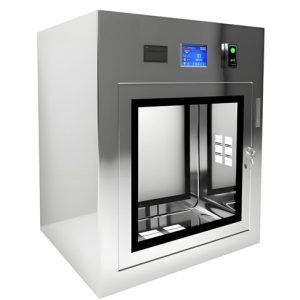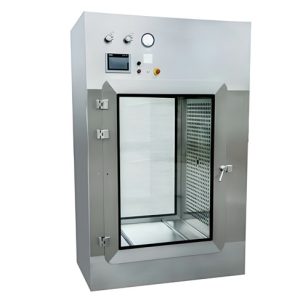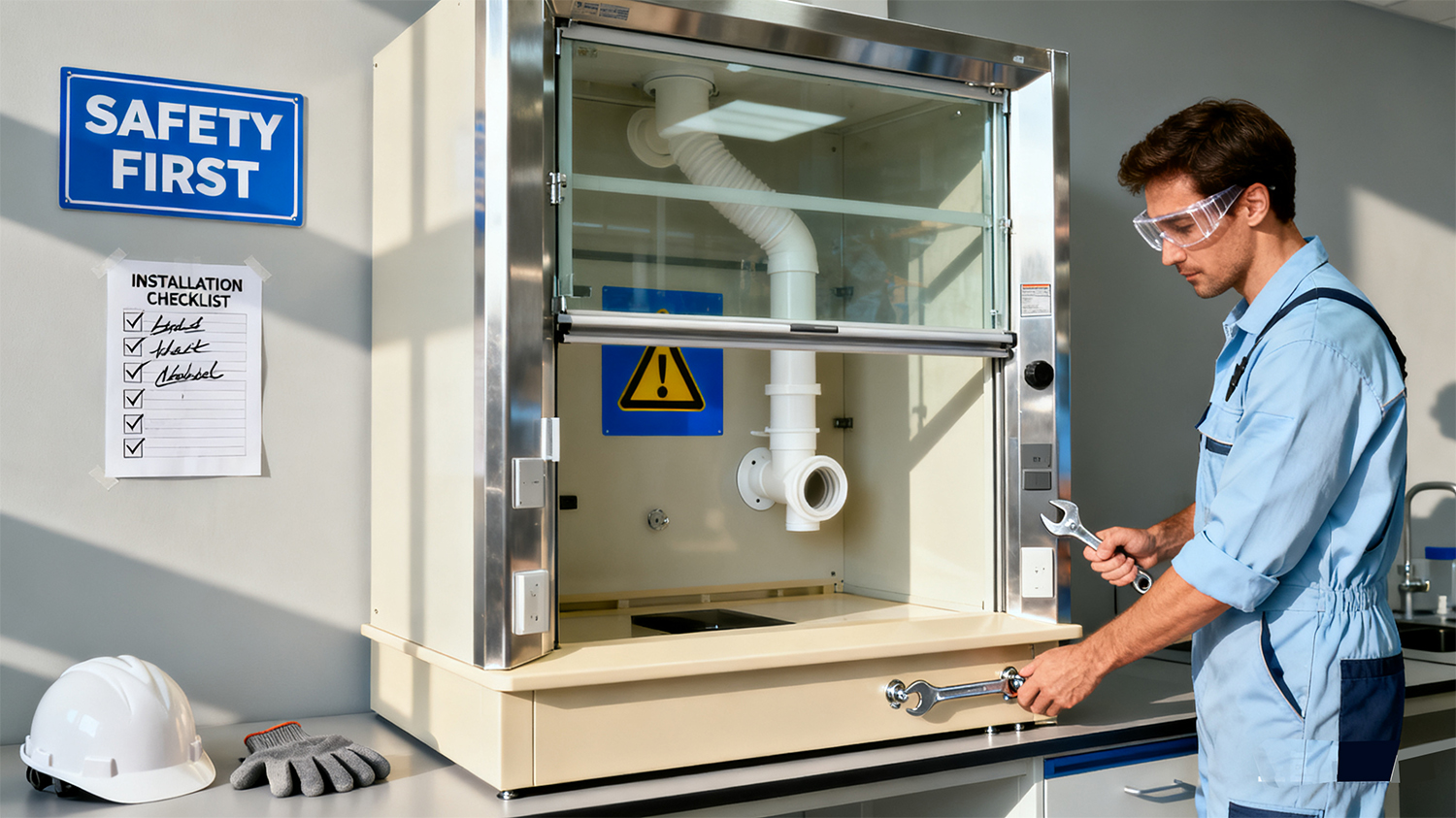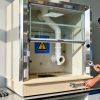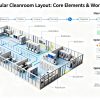Account
-
Safe payment options
We only work with the most secure payment systems.
-
Product return within 30 days
We do our very best to keep our customers happy.
No products in the cart.
You dont have any products in your cart yet, add a few products to experience this experience.
Add $500.00 to cart and get free shipping!
To see and take advantage of all discounted products.
Click HereLab Fume Hood Installation: Safety Standards & Professional Services
Table of Contents
Introduction: The Importance of Professional Fume Hood Installation
Laboratory fume hoods serve as the primary protective barrier between laboratory personnel and hazardous chemicals, vapors, and particulates. A properly executed fume hood installation is fundamental to ensuring this protection, preventing cross-contamination, and maintaining the integrity of experimental results. The fume hood installation process requires precision engineering and adherence to strict safety protocols to guarantee optimal performance.
At Deiiang™, we understand that a successful fume hood installation goes beyond simply placing equipment in a laboratory. It requires comprehensive planning, precise execution, and rigorous testing to meet all laboratory ventilation system installation design requirements and safety standards. Our approach to fume hood installation ensures your laboratory operates at peak efficiency while maintaining the highest safety standards.
Understanding fume hood operation principles and safety importance
Pre-Installation Planning: Foundation for Success
Thorough planning is the most critical phase of any successful fume hood installation project. Proper planning prevents costly modifications, ensures regulatory compliance, and guarantees optimal fume hood performance. A comprehensive fume hood installation addresses all aspects from selection to utility requirements.
Deiiang™ project managers work closely with clients during the planning stage to identify all fume hood installation requirements and develop a comprehensive project timeline. Our systematic approach to fume hood installation planning has resulted in successful implementations across hundreds of laboratories with varying complexity levels.
A. Fume Hood Type Selection and Matching
Selecting the appropriate fume hood type is fundamental to meeting specific laboratory requirements. The selection process should consider the types of chemicals used, space constraints, energy efficiency goals, and budget considerations. Each fume hood type offers distinct advantages for different applications.
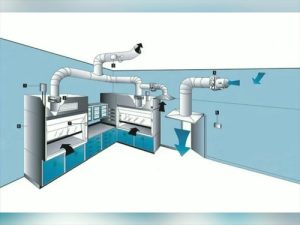
VAV
VAV Fume Hoods
Variable Air Volume technology adjusts exhaust based on sash position, offering 40-60% energy savings compared to constant volume systems. VAV fume hood installation technology requires specialized controls and balancing.
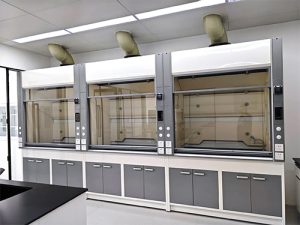
CVA
CVA Fume Hoods
Maintain constant air volume regardless of sash position through upper air bypass openings. Simpler installation but less energy efficient than VAV systems.

Du
Ductless Fume Hoods
Use filtration systems to clean and recirculate air. Lower installation costs but require careful filter selection and monitoring for specific applications.
B. Site Assessment and Environment Preparation
Proper placement is crucial for fume hood performance and safety. The installation location should be away from high-traffic areas, doors, windows, and air supply diffusers to minimize air turbulence that can compromise containment. A minimum clearance of 3-4 feet should be maintained in front of the fume hood for safe operation.
Laboratory Fume Hood Layout Considerations
Traffic Patterns
Position away from main walkways to minimize air disturbances
Structural Requirements
Verify floor load capacity (typically 150-250 psf for loaded fume hoods)
Access Requirements
Ensure adequate space for maintenance and filter replacement
C. Utility and Supporting Facility Requirements
Fume hoods require connection to various utility systems for proper operation. These connections must be planned during the design phase to ensure compatibility and compliance with all fume hood installation requirements. Our Deiiang™ team coordinates with facility managers to verify utility capacities and connection points.
Key Utility Connections
- Electrical: Dedicated circuits with proper grounding (typically 120V/20A)
- Plumbing: Acid-resistant materials for sinks and drains
- Gas Services: Appropriate gas types with emergency shut-off valves
- Ventilation: Properly sized ductwork with appropriate materials
- Compressed Air: Oil-free sources with pressure regulation
- Vacuum Systems: Central or local systems as required
D. Regulations and Safety Standards: Compliance is Essential
Fume hood installation must comply with numerous safety standards and regulations to ensure personnel protection and legal compliance. These standards establish performance criteria for face velocity, containment, noise levels, and construction materials. Adherence to lab fume hood installation standards is non-negotiable for safe laboratory operations.
| Standard Name | Focus Areas | Typical Metrics |
|---|---|---|
| ASHRAE 110 | Face velocity, containment efficiency, leakage testing | 0.3-0.5 m/s face velocity; < 0.05 ppm containment |
| ANSI/AIHA Z9.5 | Ventilation system design, maintenance, testing | Ensure effective contaminant control |
| NFPA 45 | Fire safety standards for laboratories | Flammable material storage and exhaust requirements |
| OSHA 29 CFR 1910.1450 | Laboratory workplace chemical exposure | Proper ventilation and exposure control |
E. Budget and Cost Estimation
Understanding the complete cost structure of fume hood installation helps laboratories plan and allocate resources effectively. The fume hood installation cost estimate should include both direct equipment costs and indirect expenses related to infrastructure modifications, labor, and testing. A typical laboratory fume hood installation ranges from $15,000 to $50,000+ depending on specifications and complexity.
Cost Distribution
- Fume Hood Unit:35-50%
- Installation Labor:15-25%
- Ductwork & Exhaust:10-20%
- Electrical & Plumbing:5-15%
- Testing & Certification:5-10%
Factors Influencing Cost
- Fume hood type and size
- Complexity of utility connections
- Ductwork length and material
- Building modifications required
- Local labor rates and regulations
- Additional safety features
Laboratory Fume Hood Installation Process Details
The actual fume hood installation process requires precision, expertise, and strict adherence to safety protocols. Each step must be executed correctly to ensure optimal performance and compliance with all relevant standards. A systematic approach to fume hood installation minimizes errors and ensures a successful outcome.
Deiiang™ certified technicians follow a detailed 27-point checklist during every fume hood installation project. This meticulous approach ensures that all fume hood installation safety precautions are observed and that the final installation meets or exceeds performance expectations. Our documentation process provides complete transparency throughout the fume hood installation.
A. Pre-Installation Preparation and Safety
Before beginning installation, the work area must be properly prepared and secured. This includes establishing containment barriers, verifying that all necessary permits are in place, and conducting a safety briefing with all personnel involved in the installation. Proper fume hood installation safety precautions prevent accidents and ensure a smooth installation process.
Critical Safety Measures
- Establish work zone boundaries with visible signage
- Verify lockout/tagout procedures for existing utilities
- Confirm personal protective equipment requirements
- Review emergency procedures with all team members
- Document pre-installation conditions with photographs
B. Fume Hood Positioning, Movement and Securing
Proper positioning and securing of the fume hood is critical for both performance and safety. The unit must be level, plumb, and securely anchored to prevent movement during operation. Even minor misalignments can affect airflow patterns and containment efficiency.

Professional fume hood positioning and leveling techniques
C. Exhaust System Connection: Core Components and Challenges
The exhaust system is the most critical component of fume hood operation. Proper ductwork design, material selection, and installation directly impact containment performance, energy efficiency, and system longevity. The fume hood installation steps for exhaust systems require specialized knowledge and tools.
Ductwork Selection Guidelines
Polypropylene
Excellent chemical resistance for most applications
Stainless Steel
High temperature applications and cleanrooms
PVC
Cost-effective for certain chemical applications
Fiberglass
Corrosion resistance for specific environments
D. Electrical and Control System Installation
Proper electrical installation ensures safe operation of fume hood lighting, fans, and control systems. All electrical connections must comply with local codes and manufacturer specifications. Control systems for VAV fume hood installation technology require specialized calibration to maintain proper face velocity across different sash positions.
E. Plumbing Installation and Sealing
Plumbing connections for sinks, eyewash stations, and gas services must be properly installed and tested for leaks. All connections should use appropriate materials compatible with the chemicals used in the laboratory. Pressure testing should be conducted according to established protocols.
F. Accessory Installation and Calibration
Fume hood accessories including airflow monitors, alarms, lighting, and service fixtures must be properly installed and calibrated. Each accessory should be tested to ensure proper functionality and integration with the main fume hood systems.
Post-Installation Testing and Commissioning: Performance Verification
Comprehensive testing following installation is essential to verify that the fume hood meets all performance and safety requirements. These tests validate containment effectiveness, airflow patterns, and control system functionality. No fume hood installation is complete without rigorous performance verification.
Deiiang™ provides complete testing services including fume hood face velocity testing and ASHRAE 110 fume hood certification. Our testing protocols exceed standard requirements to ensure your laboratory operates at the highest safety levels. We document all test results for regulatory compliance and future reference.
A. Static Performance Testing
Static performance tests measure fundamental fume hood operating parameters under controlled conditions. These tests establish baseline performance metrics that can be tracked over time to identify degradation or maintenance needs. Regular fume hood face velocity testing is particularly important for ongoing safety verification.
Professional face velocity measurement techniques
Face Velocity
Measured at multiple points across the sash opening
Noise Level
Measured at typical operator positions
Illumination
Measured on the work surface
B. Dynamic Performance Testing (Smoke Testing/Tracer Gas Testing)
Dynamic tests evaluate fume hood performance under simulated use conditions. Smoke testing visually demonstrates airflow patterns, while tracer gas testing using ASHRAE 110 protocol provides quantitative containment measurements. These tests are essential for verifying that the fume hood installation meets containment requirements.
Acceptable Performance
Smoke pulled smoothly into hood without turbulence
No reverse flows or spillage at sash opening
Tracer gas concentration < 0.05 ppm at breathing zone
Unacceptable Performance
Turbulent airflow with eddies or reverse flows
Smoke spillage at sash opening or sides
Tracer gas concentration > 0.05 ppm at breathing zone
C. Alarm and Control System Function Verification
All alarm and control systems must be tested to verify proper operation. This includes airflow monitors, sash position sensors, face velocity alarms, and any building automation system interfaces. Alarm setpoints should be verified against design specifications.
D. Reporting and Documentation
Comprehensive documentation provides a record of the installation and verification process. This documentation serves as a reference for future maintenance, regulatory compliance, and troubleshooting. Deiiang™ provides complete installation and testing documentation with all projects.
Common Issues and Troubleshooting
Even with proper installation, fume hoods may develop issues over time. Understanding common problems and their solutions helps maintain optimal performance and safety. Many issues can be resolved with basic troubleshooting before requiring professional service.
Frequent Fume Hood Issues
Abnormal Face Velocity
Check for blocked filters, fan operation, and damper positions. Verify building air balance.
Excessive Noise
Inspect fan mounting, bearings, and ductwork connections. Check for obstructions.
Poor Containment
Verify face velocity, check for cross-drafts, and inspect baffles and airfoils.
Control System Malfunctions
Check power supply, sensor connections, and controller settings.
Maintenance and Safe Operation Recommendations
Regular maintenance is essential for sustained fume hood performance and safety. A comprehensive maintenance program addresses both preventive and corrective needs. Combined with proper operator training, maintenance ensures long-term reliability and protection.
Daily Checks
- Verify alarm system operation
- Check for obstructions in work area
- Confirm proper sash position
- Inspect for visible damage
Monthly Inspections
- Measure face velocity
- Check lighting functionality
- Inspect airflow monitors
- Clean work surface and viewing panel
Annual Maintenance
- Comprehensive performance testing
- Motor and fan inspection
- Control system calibration
- Ductwork inspection
Conclusion and Call to Action
Professional fume hood installation is a complex process that requires specialized knowledge, precise execution, and rigorous testing. When performed correctly, it ensures laboratory safety, regulatory compliance, and optimal performance. Investing in proper installation provides long-term benefits through improved safety, reduced operating costs, and extended equipment life.
The comprehensive approach to fume hood installation outlined in this guide represents industry best practices developed through decades of experience. By addressing all aspects from planning through testing and maintenance, laboratories can achieve the highest levels of safety and performance.
Ready to Start Your Fume Hood Installation Project?
Contact Deiiang™ today for a comprehensive consultation and quotation




